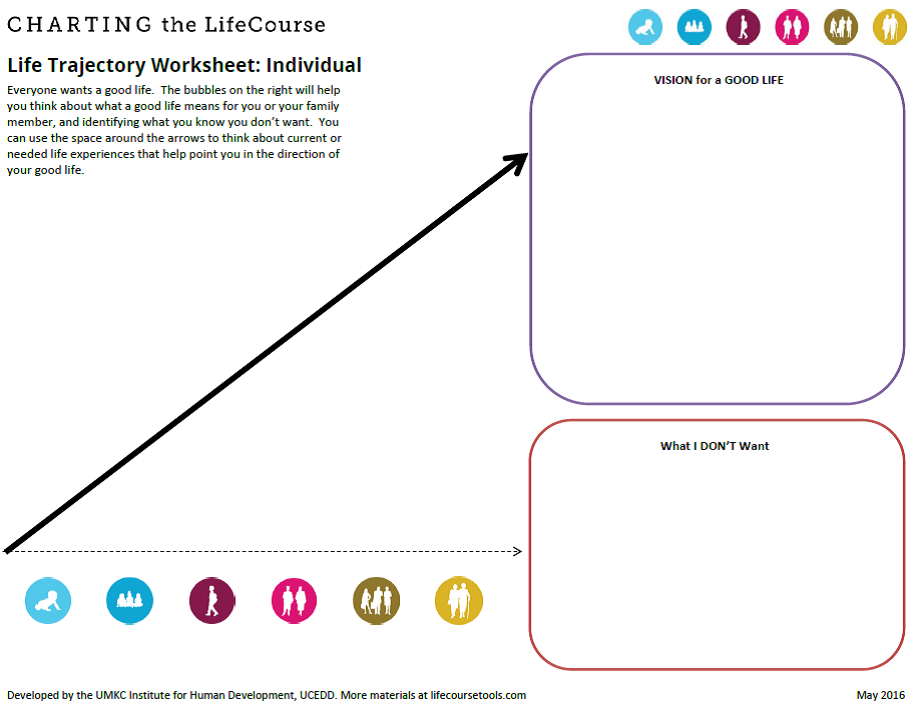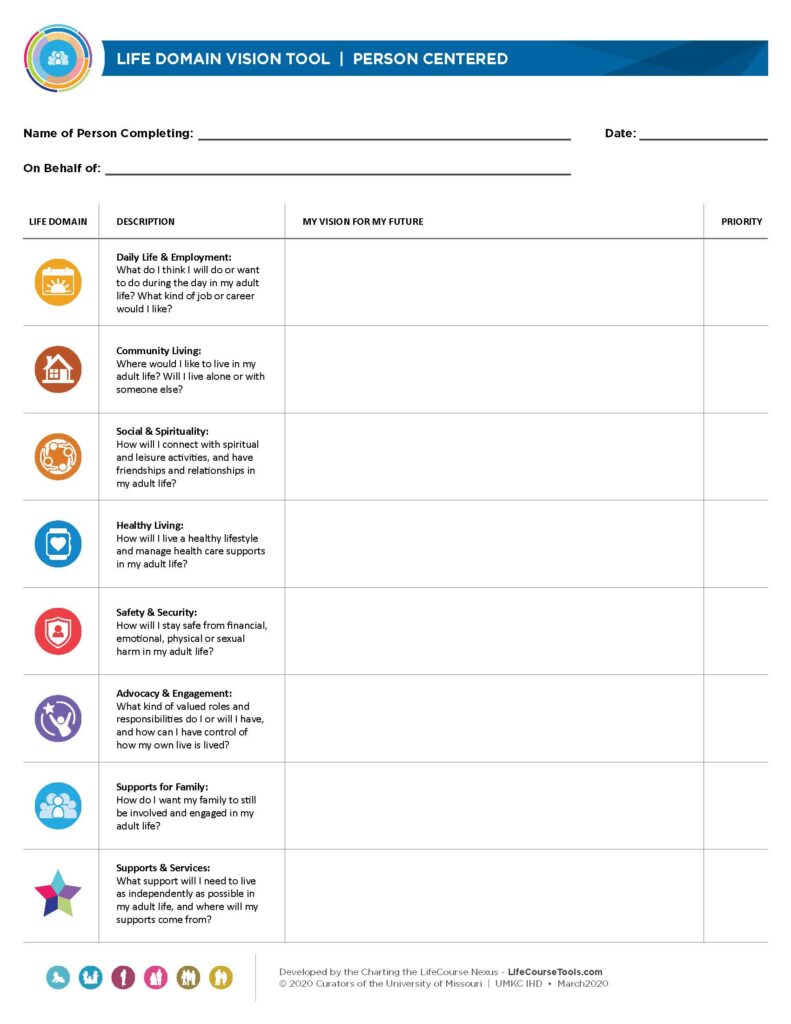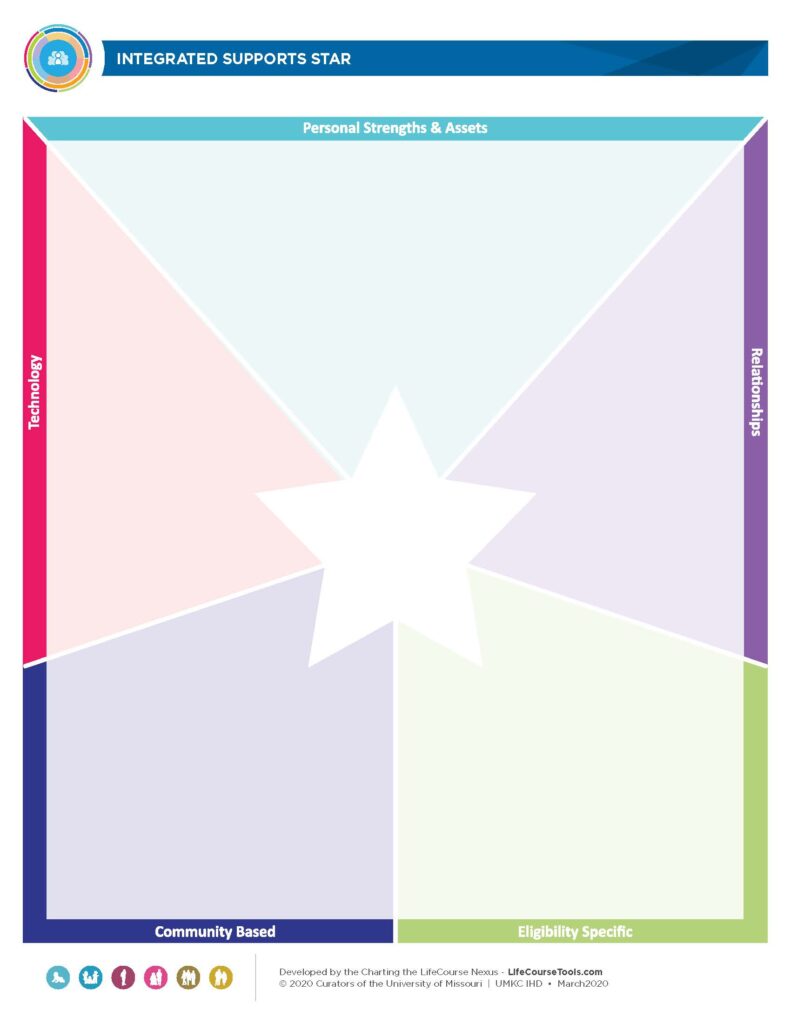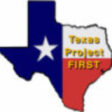Creating a vision can be hard if we cannot think big. Families often lower their expectations for their children once that disability label is placed upon their child’s head. Yet, if we can dream big, we can write down what we want or do not want for our children. It will guide decisions you make in:
- IEP meetings
- in service planning meetings with agencies, or
- when making choices in adult life.
Life is a journey. Each stage of life impacts another. What we experience when we are young impacts our future life. Some experiences help us get to a good life. Some do not. Understanding our vision (or what we want or do not want for a good life) can help us realize whether the decisions we make are helping us get to that good life or not.
The journey to getting to your future is often called a “trajectory”. This is a fancy name for a path. Our path to the future will not always be straight. Use your trajectory to support positive life experiences and prevent negative life experiences.
Sometimes it is hard to get a vision for a good life. So, start with what you do not want in life. Then figure out what you do want. This may change every year.

A vision for the future must include all the domains of life. Here is a tool that asks the questions under each domain (Daily life and employment, Community Living, Social and Spirituality, Healthy Living, Safety and Security, Advocacy & Engagement, Supports for Family, Supports and Services)

We all need supports to lead good lives. Using a combination of a lot of different types of supports can lead to a more inclusive, quality life. These include those that are publicly or privately funded and based upon eligibility; community supports that are available to anyone; relationship-based supports; technology; and the personal strengths and assets of the individual and their family. This tool helps families and individuals with disabilities work in partnership to support a good life.





